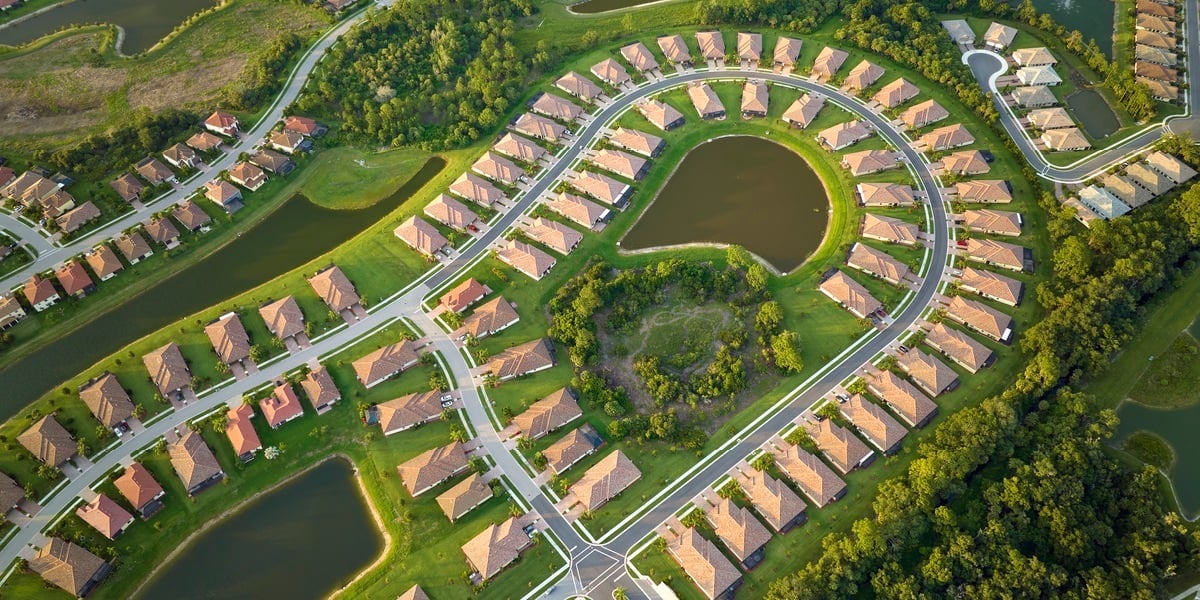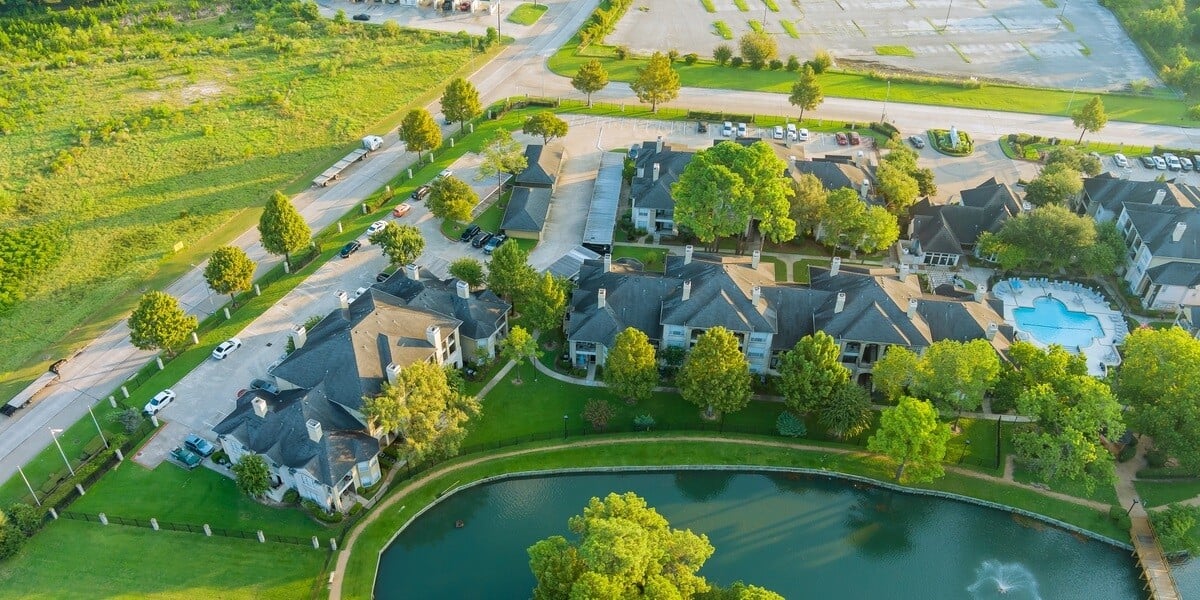If you’re a board member or property owner involved in your community’s governance, you may have come across the terms HOA and POA. Sometimes, they’re used interchangeably. Other times, they seem to refer to completely different things.
Understanding the difference between an HOA (Homeowners Association) and a POA (Property Owners Association) is essential for ensuring legal compliance, effective decision-making, and smooth community operations.
This blog breaks down each type of association, how they differ, why this matters for you as a board member, and how a knowledgeable management company can help you.
Let’s start with the basics.
What Is an HOA (Homeowners Association)?
An HOA, or Homeowners Association, is a nonprofit organization established by a residential community’s developer. Once the community is built, the HOA is turned over to the homeowners, who then elect a board to govern the association.
What does an HOA do?
HOA responsibilities consist of managing the shared interests of a residential neighborhood.
This typically includes:
- Enforcing the CC&Rs (Covenants, Conditions, and Restrictions)
- Collecting dues or assessments from homeowners
- Managing the maintenance and upkeep of common areas such as parks, pools, roads, and landscaping
- Ensuring the community remains safe, well-maintained, and in compliance with governing documents
These responsibilities help protect property values and maintain a high standard of living for everyone in the community.
Who serves on an HOA board?
HOA boards are made up of elected homeowners who volunteer their time to help govern the community.
Typical HOA roles include:
- President: Leads the board and presides over meetings
- Vice President: Assists the president and steps in when needed
- Treasurer: Manages the association’s finances and budget
- Secretary: Keeps records and meeting minutes
- Members-at-Large: Support various projects or committees
These HOA board members are responsible for making decisions on behalf of the community and ensuring that the association operates within its legal and financial obligations.
What Is a POA (Property Owners Association)?
A POA, or Property Owners Association, may sound similar to an HOA, but the structure and scope can be quite different.
How is a POA defined?
A POA is a broader type of community association that can govern not only residential properties but also commercial, mixed-use, or undeveloped land. POAs may cover a wider geographic area or span different property types that don’t fit neatly into the typical residential HOA model.
In some regions, “POA” is simply a regional synonym for HOA, but in many cases, a POA has a distinct legal structure.
What types of properties can a POA include?
POAs often include:
- Commercial buildings
- Mixed-use developments
- Vacant land or lots
- Industrial or agricultural zones
- Residential subdivisions
This means a POA might govern more diverse properties, often with different sets of rules depending on the land use.
Legal and governance distinctions
Unlike HOAs, which usually operate under a single set of CC&Rs focused on residential living, POAs may have more complex governance structures. They might be governed by separate sets of rules for different zones within the association.
Some POAs are set up with more flexible rules to encourage business development, while others mirror the structure of a traditional HOA but with added responsibilities.
HOA vs. POA: What’s the Difference?
At first glance, HOAs and POAs might appear similar, but there are important differences in how they operate.
Scope of Authority
HOAs typically govern residential communities. They deal with homes, townhomes, or condominiums and focus on maintaining residential standards.
POAs can include a mix of property types, including commercial or undeveloped land. This broader scope often means more complex rule enforcement and property use coordination.
Membership and Dues
HOAs are usually composed exclusively of homeowners. If you own a home in the community, you’re automatically a member and must pay dues.
POAs may include all property owners, whether they live on the property or not. That could mean land developers, commercial building owners, and residential homeowners are all members, each with potentially different rights and obligations.
Legal Structure and Powers
HOAs are usually governed by a single set of CC&Rs, enforced by the board, and supported by state HOA laws.
Depending on the property type, POAs might be governed by multiple documents. Their powers and responsibilities could be more extensive (or, in some cases, less clear) than those of a typical HOA. This makes legal compliance more challenging without expert support.
Common Misconceptions
To help clear things up, let’s walk through some of the most common myths and misconceptions we hear from board members and property owners.
“POA and HOA mean the same thing.”
Not always. While they can function similarly, the terms aren’t interchangeable in every case. Always check your governing documents.
“POAs only apply to rural or undeveloped land.”
Many POAs include a mix of property types and can be found in suburban and urban areas as well.
“Only HOAs enforce rules.”
POAs also enforce covenants and rules, though the nature of those rules may vary based on property type and jurisdiction.
Understanding these differences helps avoid confusion and keeps your board aligned on governance responsibilities.
Why This Distinction Matters for Board Members
If you’re serving on a board (or thinking about volunteering), knowing whether your association is an HOA or POA can affect nearly every part of your role.
Compliance and Enforcement
HOAs and POAs may have different legal requirements under state law. Misunderstanding your responsibilities could lead to legal risk, inconsistent enforcement, or community disputes.
Planning and Budgeting
Budgets, dues, and project planning often differ depending on the scope of your association. A POA that includes commercial properties might handle reserves, maintenance, and assessments differently than a purely residential HOA.
Understanding these dynamics is crucial for effective financial management.
Resident Communication
Residents often assume their board “just runs the neighborhood,” without realizing the limits of the board’s power or the type of association in place.
Knowing the difference allows you as a board member to answer questions confidently, resolve disputes, and guide your community toward productive solutions.
Governance Decisions
Whether amending governing documents or overseeing capital improvement projects, your association's legal structure determines how decisions are made and who has the authority to make them.
A clear understanding prevents board overreach (or underperformance) and supports better community outcomes.
Still Unsure? Get Expert HOA Consulting from Hignell
Serving on a board comes with big responsibilities, and navigating your community's governance structure can be overwhelming.
That's where Hignell HOA comes in.
With decades of experience managing residential communities across Northern California, we specialize in helping HOA board members make sense of their legal obligations, financial oversight, and day-to-day responsibilities.
We don’t just help you manage your association — we partner with you to build thriving communities. Our team is well-versed in HOA structure and can provide the clarity you need to operate confidently and compliantly.
Let’s make governance easier. Contact us today to speak with a dedicated HOA specialist who understands the complexities of your association.









